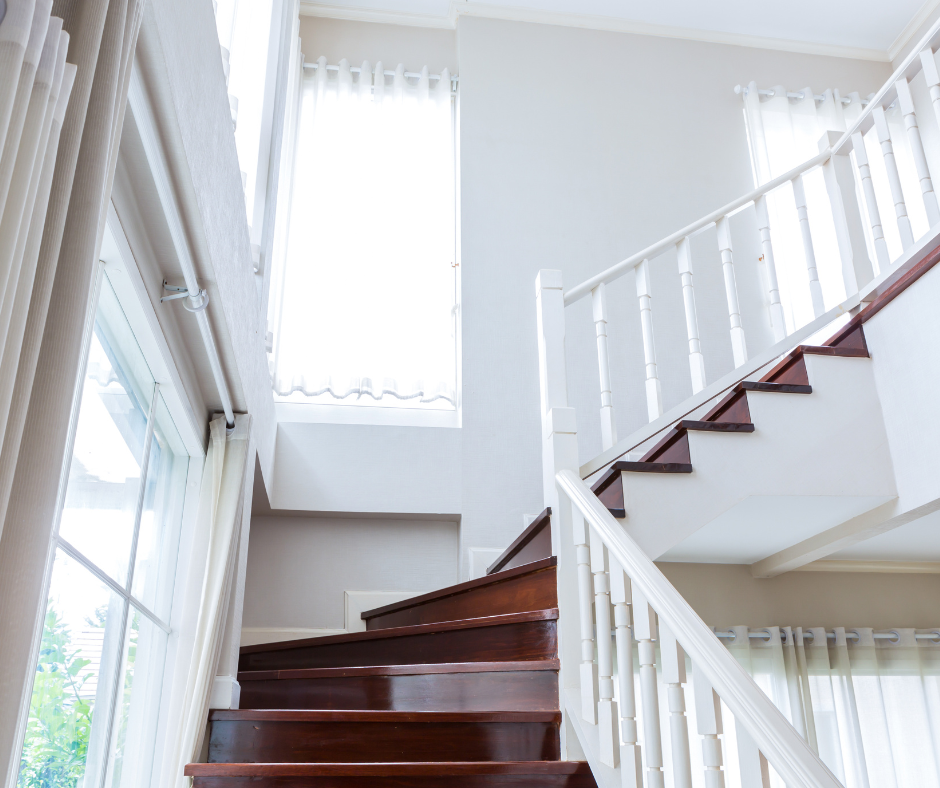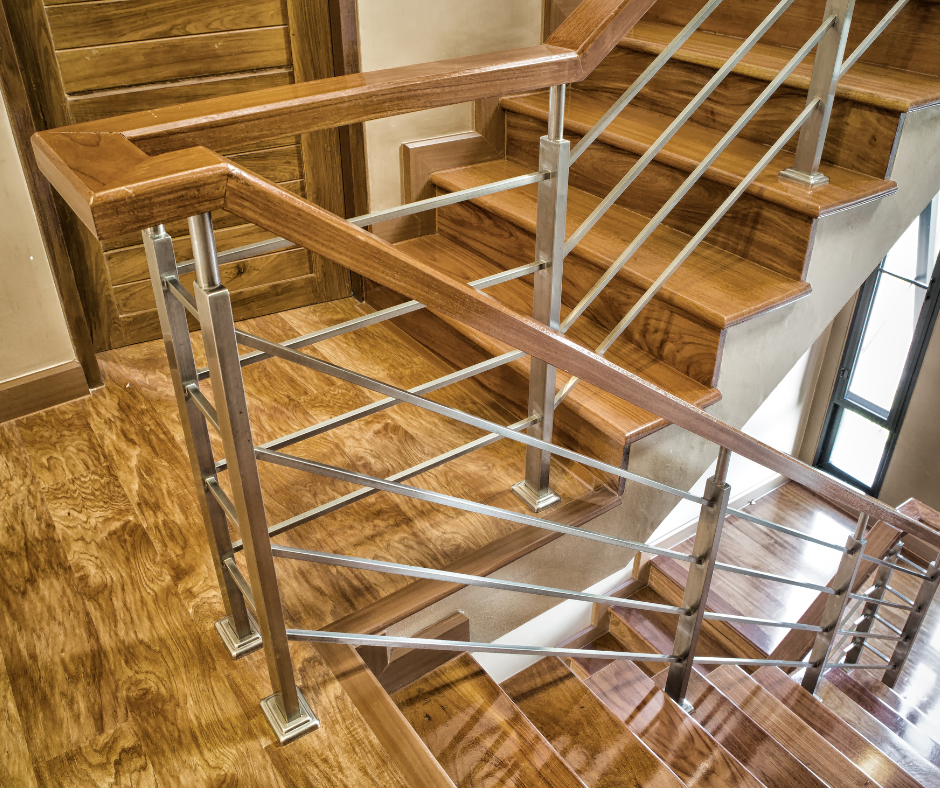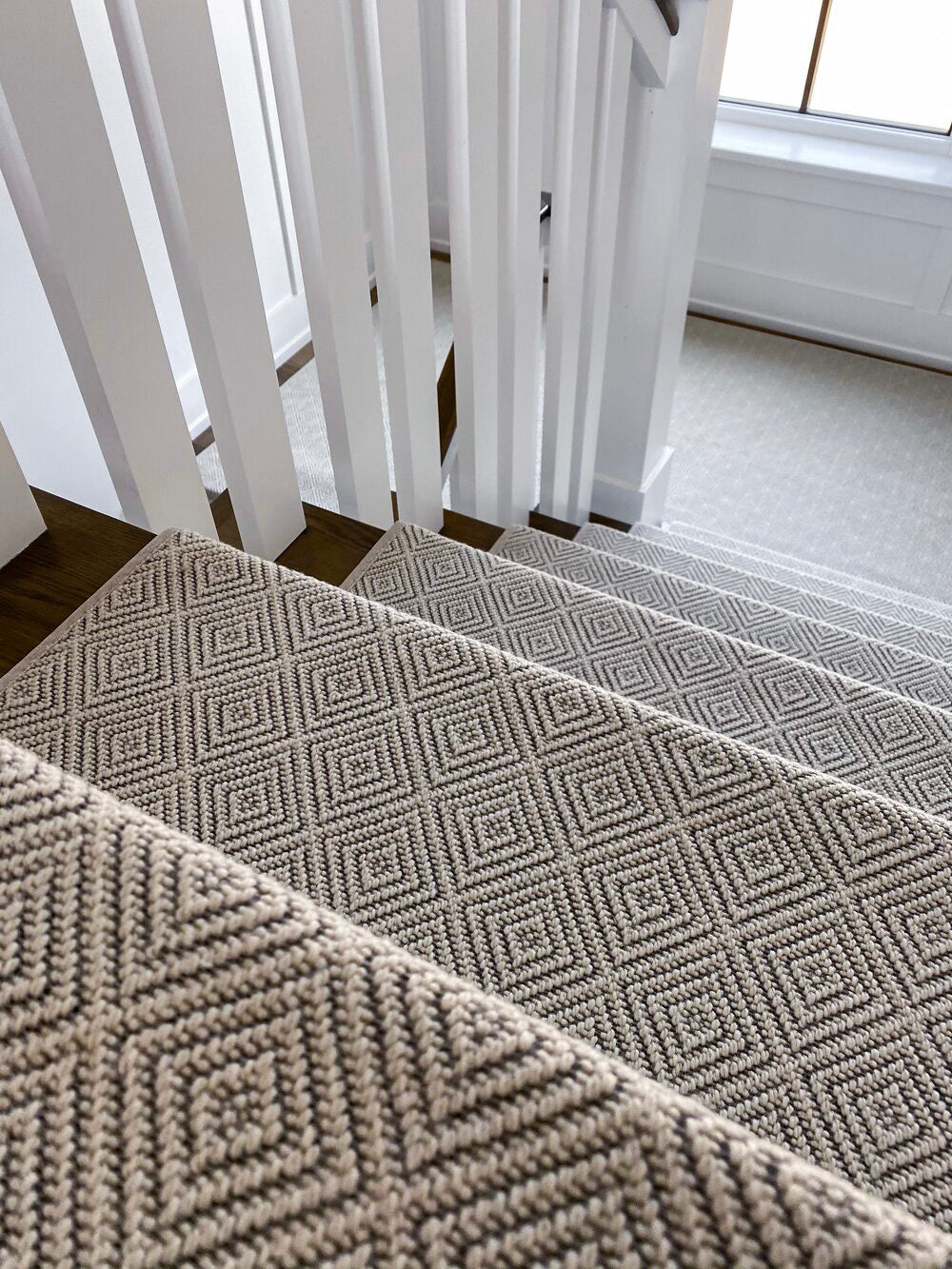Upgrading your staircase?
Knowing the parts of a stair handrail means understanding each element that adds both safety and style to your stairs—like the handrail, balusters, newel posts, and brackets.
In this guide, you’ll learn how these components work together and why small details like carpet stair treads can take your stair design to the next level.
We’ll also explore material options, modern design choices, and smart installation tips that make DIY or custom projects easier.
Whether you’re renovating or building new, this article breaks down every term so you feel confident with your choices.
Let’s step into the details that make your staircase beautiful and safe.
Main Parts of a Staircase
Before diving into the handrail system, it helps to understand the core parts of a stair.
These foundational pieces not only affect how your staircase looks but how it functions every day.
Treads
These are the horizontal boards you step on. Our specialty at Oak Valley.
Carpet stair treads add traction, reduce noise, and offer a custom design upgrade without the cost of a full renovation.
Risers
These are the vertical parts that rise between each tread.
Not all stairs have risers—open-riser stairs are common in modern homes.
Stringers
The diagonal side panels that support the stair structure and hold up the treads and risers.
Handrails
These sit along one or both sides of the staircase and are what you hold onto for support.
Balusters
Vertical bars that connect the handrail to the tread or floor.
They provide stability and help prevent falls.
Newel Posts
Sturdy, supportive posts located at the start, end, or landing of a staircase.
These are often design focal points too.
What Is the End of a Handrail Called?
The end of a handrail is called a handrail termination.
It can be simple or styled, depending on the design.
A returned end curves the handrail into the wall for a clean finish, while a finial or decorative cap offers a polished, custom look.
The handrail termination matters for both safety and style.
It ensures the handrail doesn’t end abruptly, which helps prevent snags or accidents.
Complete Breakdown of Stair Handrail Components
Understanding the parts of a stair handrail helps with planning, installation, and even routine maintenance.
Handrail
The core of the system.
This is the part you grip as you walk up or down the stairs.
It should be smooth, secure, and comfortable to hold.
Newel Post
Anchors the handrail system.
You’ll find them at landings, starts, and ends of the stairs.
This is where style and strength come together.
Baluster
Supports the handrail vertically.
Balusters come in wood, metal, or glass and often add the most personality to the stairwell.
Shoe Rail
The bottom rail that holds the balusters in place.
Not all staircases have one, but it creates a more polished and uniform appearance.
Handrail Termination
Where the handrail ends. This may include curves, returns, or a decorative cap.
Fillet
A small strip of wood placed between balusters on the shoe rail to secure them.
Handrail Bracket
Wall-mounted supports that hold the handrail in place and ensure it’s secure.
Return
A short curve or turn that brings the handrail back into the wall—common for code-compliant safety and added elegance.
Materials for Every Style and Budget
The material you choose for your handrail system doesn’t just affect looks—it also plays a role in durability, cost, and maintenance.
Wood
Classic and adaptable. It can be painted or stained to suit any home aesthetic—from rustic to modern.
Wood is warm to the touch and great for families with kids.
Metal
Sleek, minimal, and durable. Perfect for industrial or contemporary interiors.
Powder-coated metal offers color variety and resistance to scratches.
Glass
Creates openness and lets in more natural light.
Usually paired with metal hardware, glass handrails and balusters work well in modern, urban-inspired spaces.
Each material can also be combined with others—for example, wood handrails with metal balusters—for a hybrid design that balances tradition and trend.
Common Questions About Stair Handrails
Here are a few questions we hear often from homeowners looking to learn more about the full stair system:
What height should a stair handrail be installed at?
Most residential codes require handrails to be 34–38 inches from the stair tread nosing (front edge).
Always check your local building codes to be sure.
Can I install a handrail myself?
Yes, with the right tools and patience.
It's a manageable DIY project, especially for a straight staircase.
You’ll need brackets, screws, a drill, measuring tape, and a level.
What is the difference between a guardrail and a handrail?
A handrail is what you hold onto.
A guardrail prevents falls from elevated surfaces like balconies or stair landings.
They serve different safety purposes but are sometimes combined into one system.
Style Upgrades That Work With Any Stair Type
Staircases are one of the first things guests see in your home.
When updating the parts of a stair handrail, it's also a great time to consider small upgrades that make a big visual difference.
Decorative Brackets
Swapping standard brackets for custom, scroll-style or brass-finished options instantly elevates your look.
Contrasting Finishes
Try black balusters with a white handrail for a high-contrast, modern look.
Integrated Lighting
Under-rail LED strips are a smart way to add both elegance and visibility to your staircase.
Softening with Textiles
Installing Oak Valley’s custom carpet stair treads adds texture and warmth while protecting your stairs and reducing noise.
Design Flexibility in Traditional vs. Modern Homes
Home styles range from classic to cutting-edge, and so do handrail systems.
Understanding your design goals helps you choose the right materials and details.
Traditional Staircases
Often feature curved handrails, detailed newel posts, and turned-wood balusters.
Wood reigns here, and the focus is on charm and craftsmanship.
Transitional Styles
Combine old and new.
Think square wood posts with subtle decorative balusters or brushed nickel accents.
Modern Homes
Go minimal.
Straight lines, geometric balusters, and mixed materials like glass and powder-coated steel are popular.
This is where homeowners are especially drawn to modern newel post designs—they're sleek, clean, and help define the entire stair aesthetic.
Why Modern Newel Post Designs Matter
While traditional newel posts tend to be ornate and carved, today’s homeowners are leaning into simplicity and smart shapes.
When choosing modern newel post designs, consider:
-
Material: Metal and glass offer an updated, lightweight feel.
-
Shape: Square or rectangular silhouettes feel clean and structured.
-
Finish: Matte black, satin nickel, or even clear acrylic posts are trending.
These designs still offer all the support needed for your stair handrail system—but with a look that matches updated interiors.
Even if your home leans traditional, a modern newel can create an eye-catching contrast that feels intentional.
How to Combine Safety and Style
Handrails are essential for safety—but they can also be one of the most beautiful design features in your home.
Here’s how to strike that balance:
Use Durable Materials
Don’t sacrifice strength for style.
If your home has heavy traffic—especially with pets and children—choose materials that resist scratches and wear.
Follow Local Codes
Most codes specify handrail height, spacing between balusters (usually less than 4 inches), and weight-bearing requirements.
These rules keep everyone safe.
Finish the Look with Details
Carpet stair treads, elegant balusters, and well-placed lighting can take your handrail from functional to unforgettable.
How to Keep Your Stair Handrail Looking Great
Like any surface in your home, your handrail needs upkeep to stay in top shape.
Dust Weekly
Handrails collect a surprising amount of dust and fingerprints.
Use a microfiber cloth to wipe them down weekly.
Refinish Every Few Years
If your handrail is wood, check for scratches or dullness.
Sanding and restaining can bring it back to life.
Tighten Brackets Annually
Make it part of your spring cleaning to check for any loose handrail brackets or wobbly balusters.
Stepping It Up
Knowing the parts of a stair handrail gives you the freedom to create a staircase that reflects your home’s personality and keeps your family safe.
From the brackets and returns to the balusters and terminations, every detail counts.
And don’t forget the foundation—parts of a stair like treads and risers deserve just as much thought.
That’s where Oak Valley Designs comes in.
Our carpet stair treads provide comfort, traction, and beauty—making them the perfect partner for any handrail system.
Whether your handrail is sleek and modern or classic and curved, our treads complete the look with ease.
We’re here to help you bring it all together—beautifully and safely.
Get Started Today
-
Website: https://oakvalleydesigns.com/
-
Phone: 706.331.0315
-
Email: info@oakvalleydesigns.com
-
Address: 30 River Ct SW Bldg E Cartersville, Ga 30120




